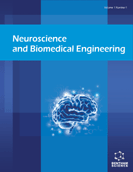Abstract
Background: This article follows a theme of articles on the subject of ‘neuroregulation’ published by the author. The aim of this original article is to further elucidate that ‘Blood Glucose is Neurally Regulated’, in particular, that type 1 and type 2 diabetes are co-morbidities because the genetic expression of insulin is followed by the reaction of insulin with its substrate; and that any explanation for type 1 and type 2 diabetes must conform to the fundamental laws of chemistry which govern chemical reactions and influence (i) how the protein is expressed or activated (genotype) and to what extent, (ii) how the protein maintains its shape and reactivity (phenotype), (iii) how the protein reacts with its substrate, and (iv) that there is a complex network of organ systems which regulate functional parameters such as blood pressure, blood glucose, acidity, etc.
It considers that the regulation of blood glucose, which we recognise as type 1 & 2 diabetes, is heavily influenced by the neural regulation of pH. In addition, recognition that the brain regulates the autonomic nervous system and physiological or functional systems leads us to consider that the onset and progression of type 1 diabetes, and hence the expression of pre-pro-insulin, are influenced by the many and various factors which alter gene conformation, the genetic expression of proteins, protein conformation, and/or by associated chemical reactions e.g. resulting from the influence of viruses, vaccines, drugs, bacteria and stress.
Conclusions: Finally, and in support of the arguments presented, this article reports how Strannik Virtual Scanning – a cognitive technology which encompasses an understanding of the structural nature of the relationship between brain function, autonomic nervous system, physiological systems and pathological correlates - is able to distinguish between prediabetes and diabetes, between genotype and phenotype, determine the complex range of emergent pathologies influencing the health of each and every organ, and contribute to further advances regarding diabetes etiology.
Keywords: Genotype, phenotype, autonomic nervous system, blood glucose, acidity, pH, Strannik.
 24
24


